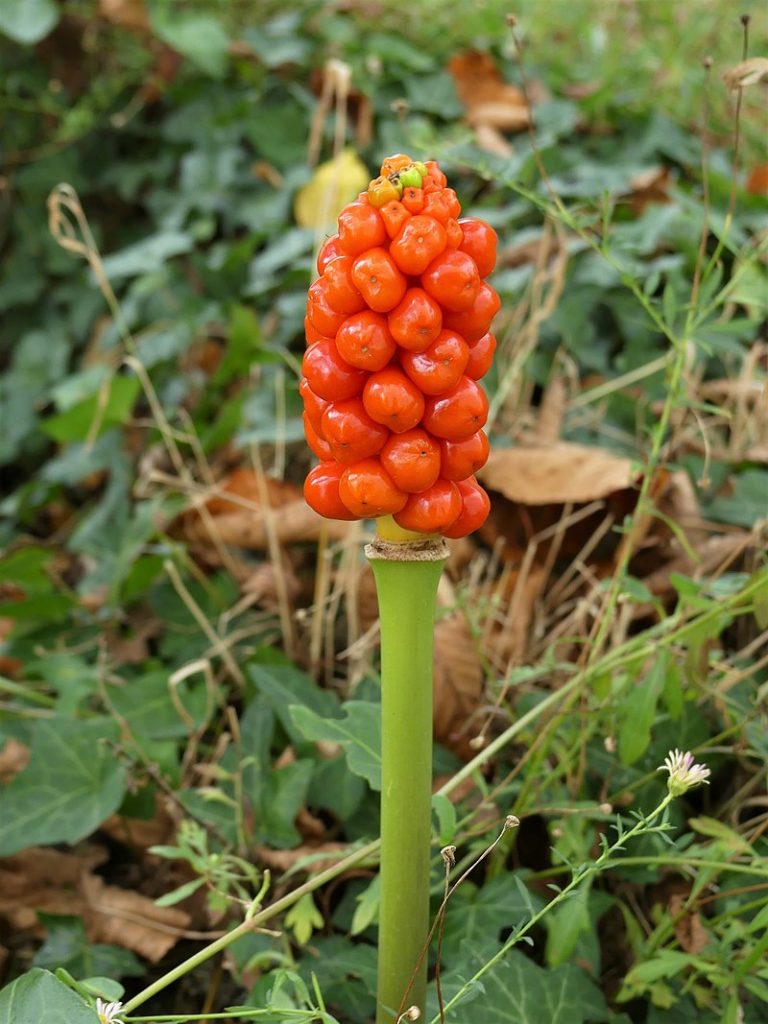
This herbaceous perennial is a native of the Mediterranean region and other parts of Europe and the East, but has naturalized in various parts of the world including scattered places in the United States. It is a member of the arum family, Araceae, that also includes peace lily, skunk cabbage, and jack-in-the-pulpit. In fall arrow-shaped gray-green leaves appear on long petioles. They are up to 12″ long and conspicuously marked with cream veining and marbling within a narrow green border. The beauty of the markings vary and take a couple of years to develop but careful selection of desirable plants is worth the effort. In warm climates the leaves last all winter; in cold climates they may die back but reappear in early spring. In early summer the white to yellowish-green spathe and spadix emerge with the spadix bearing tiny yellow flowers. Orange-red berries follow the flowers on the spadix as the spathe and leaves disappear. Hosta and ferns are especially good companions for Lords and Ladies since they will produce new leaves as the foliage of the Lords and Ladies disappears for the summer. A good choice for a woodland shade garden and valuable for winter arrangements. The leaves, fruits, and rhizomes are poisonous. The genus name, Arum, is from the ancient Greek ἄρον (áron) and perhaps is the name of a similar plant. The specific epithet, italicum, is the Latinized form of Italy, a place where the plant was native. Photo Credit NasserHalaweh Wikimedia Commons

Type: Herbaceous perennial
Bloom: White to yellowish green spathe and spadix with tiny yellow flowers
Size: 6-18” x 6-18” W
Light: Sun for best flowers and berries; shade for best foliage markings; tolerates deep shade.
Soil: Humusy, consistently moist, well-drained
Hardiness: Zones 6-9
Care: Low maintenance
Pests and Diseases: None of significance
Propagation: Seed; division
Companion plants: Hosta, ferns, white flowered hellebores, white flowered bulbs such as crocus and snowdrops
Outstanding Selection: ‘Marmoratum’
Photo Credit: Père Igor Wikipedia Commons